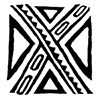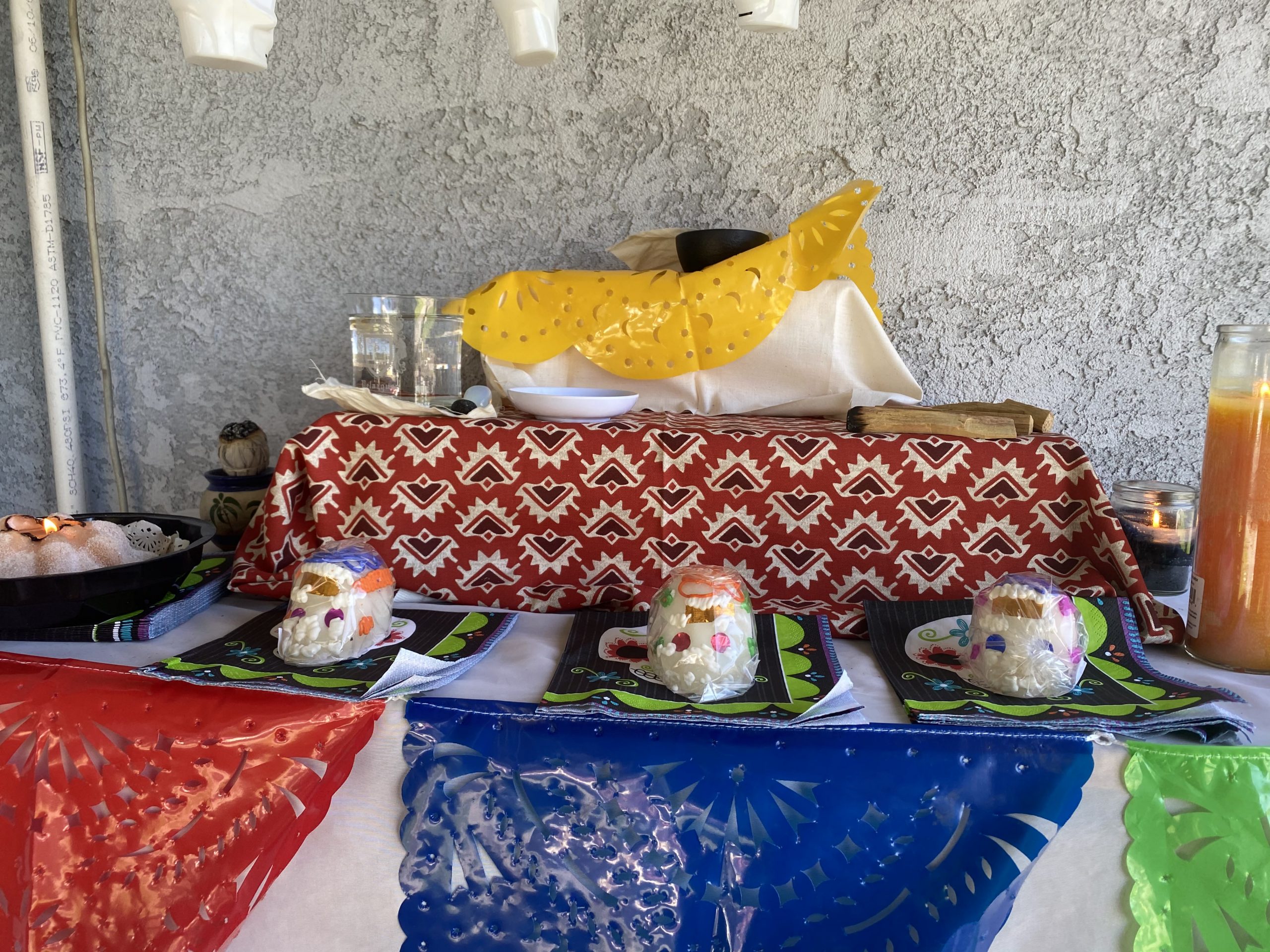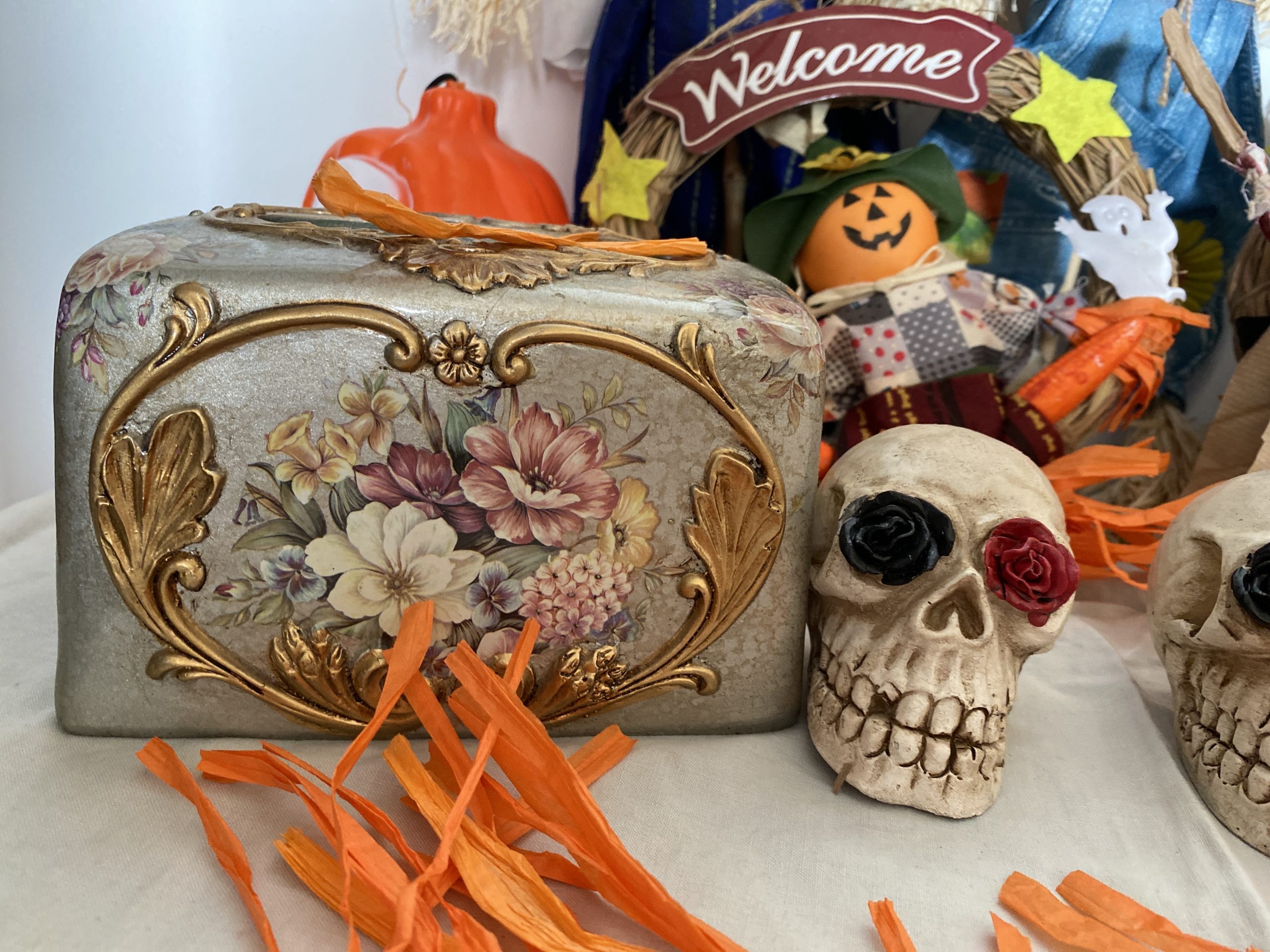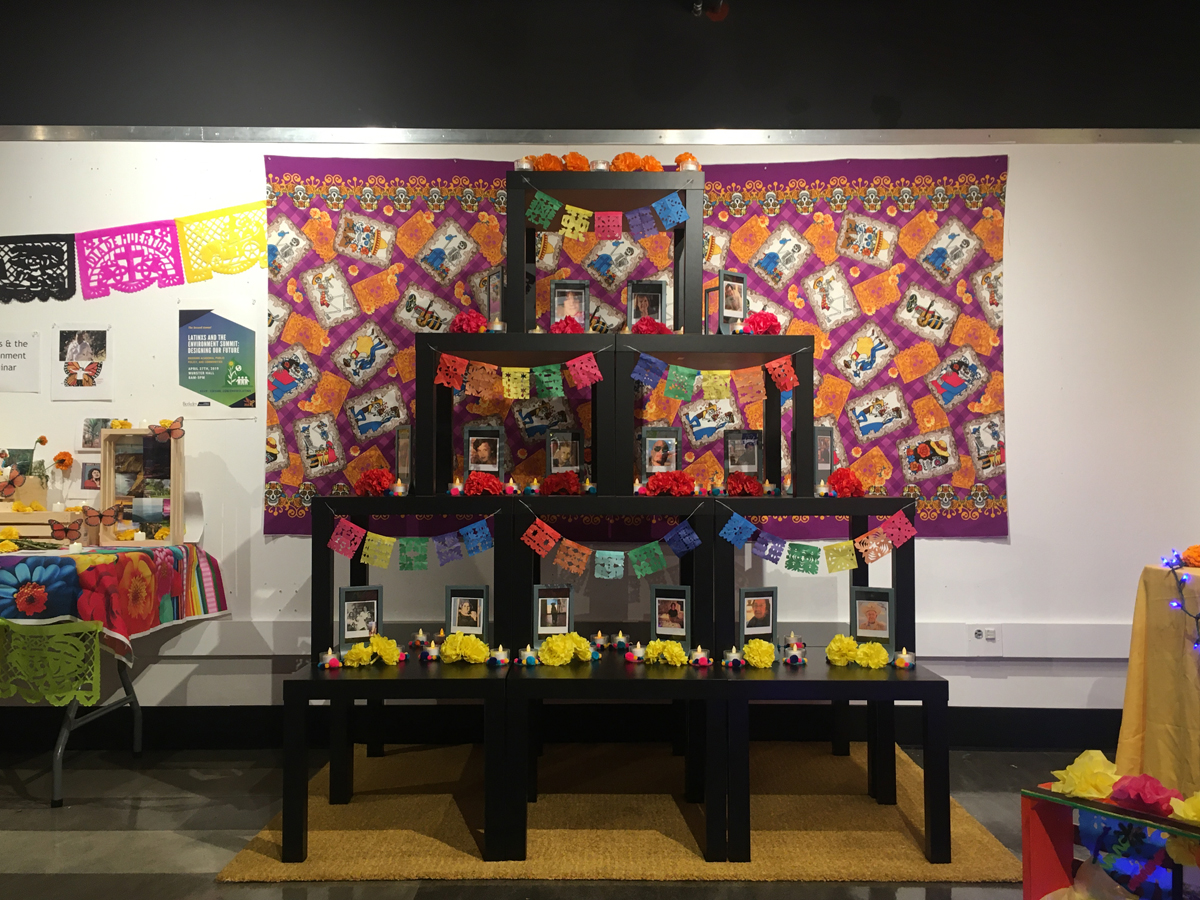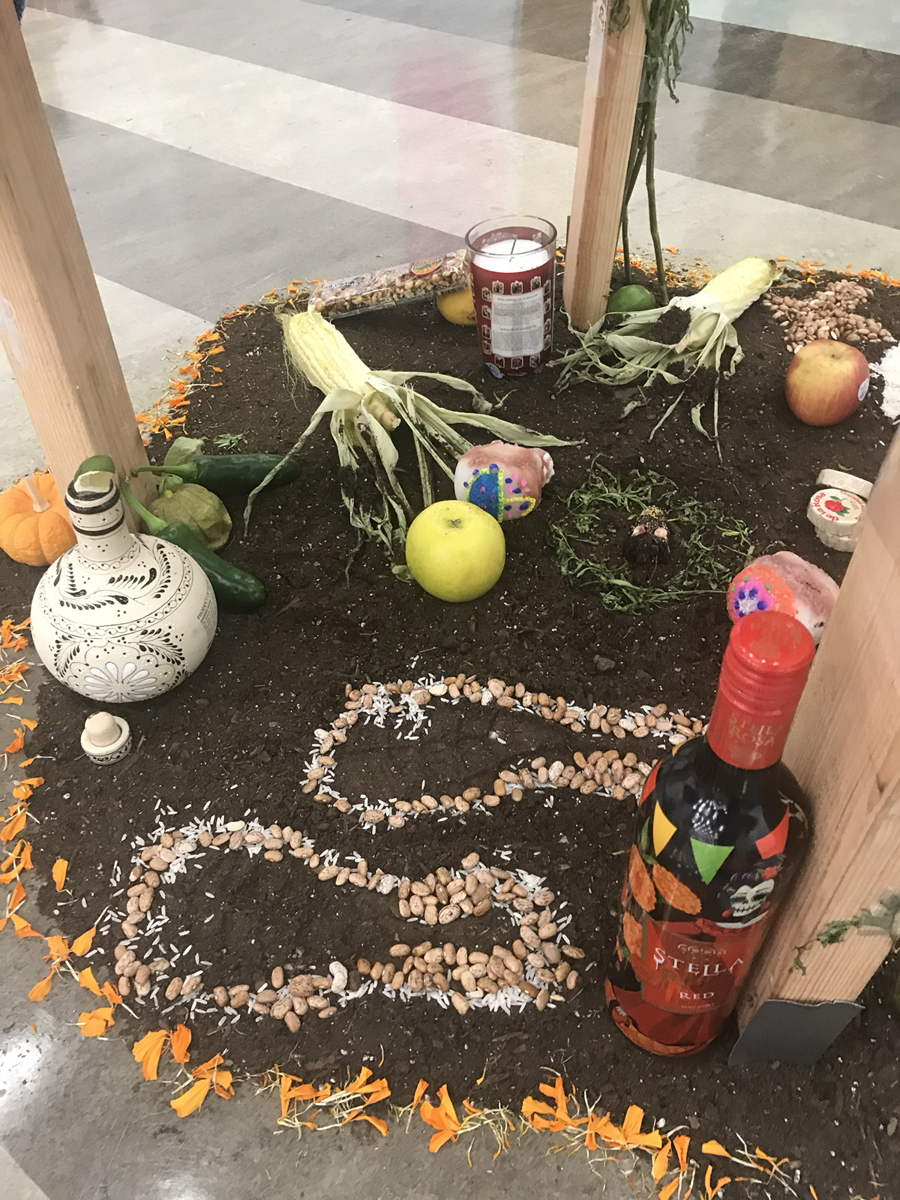
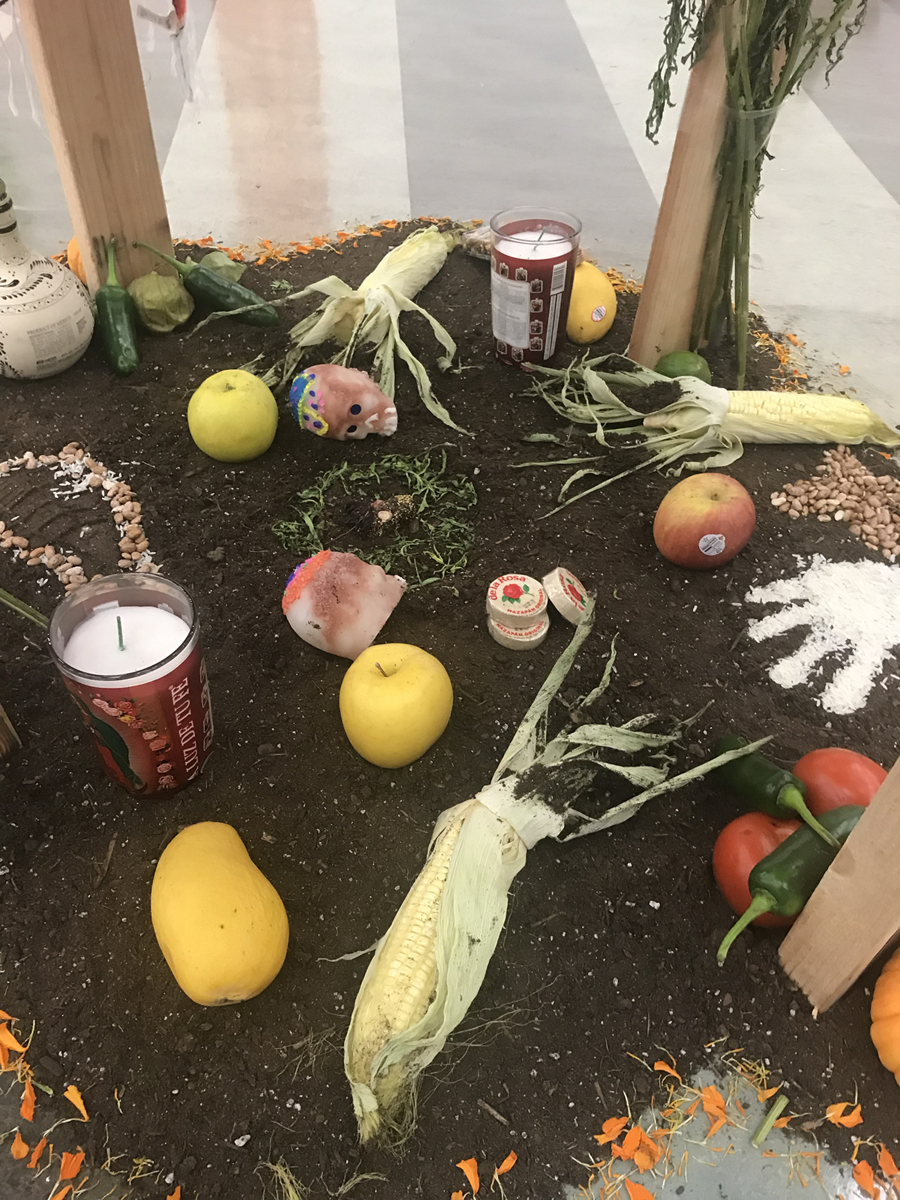
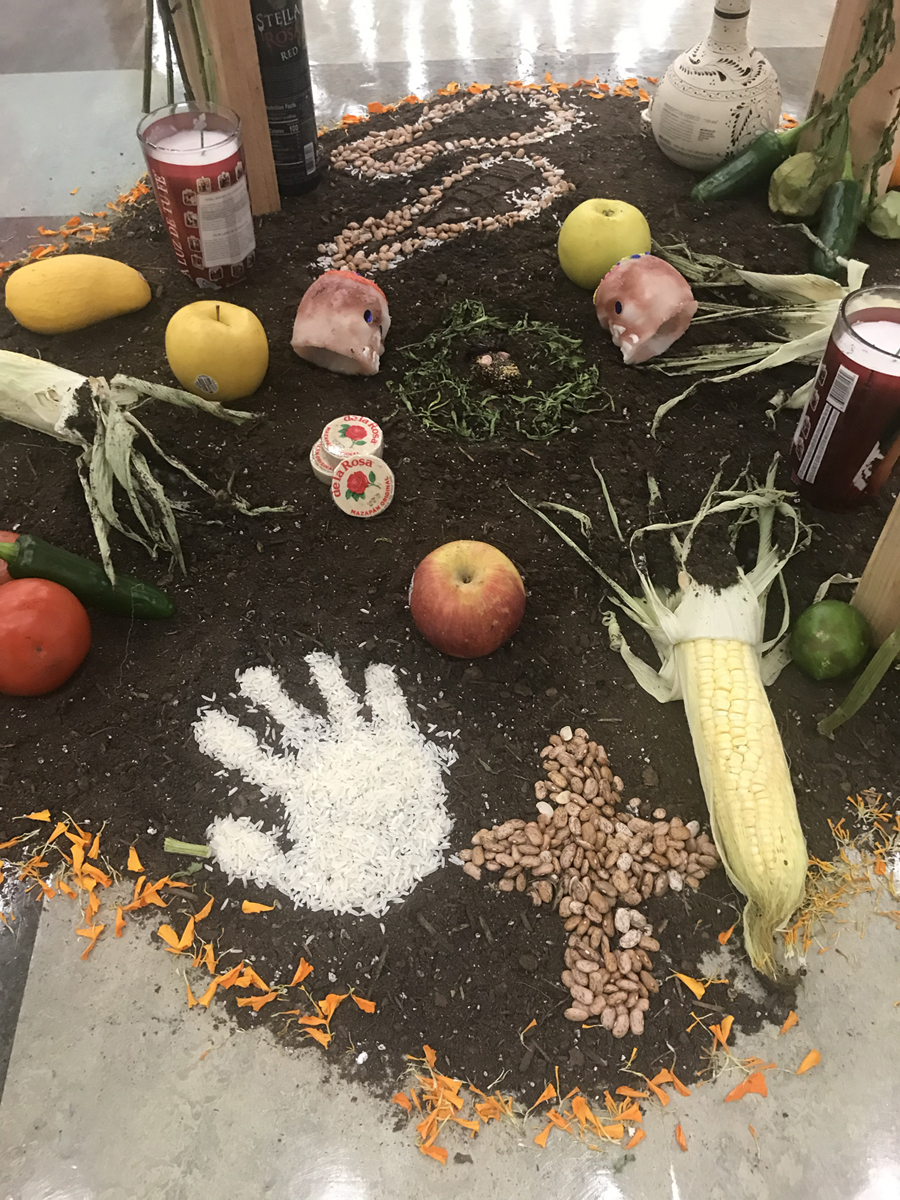
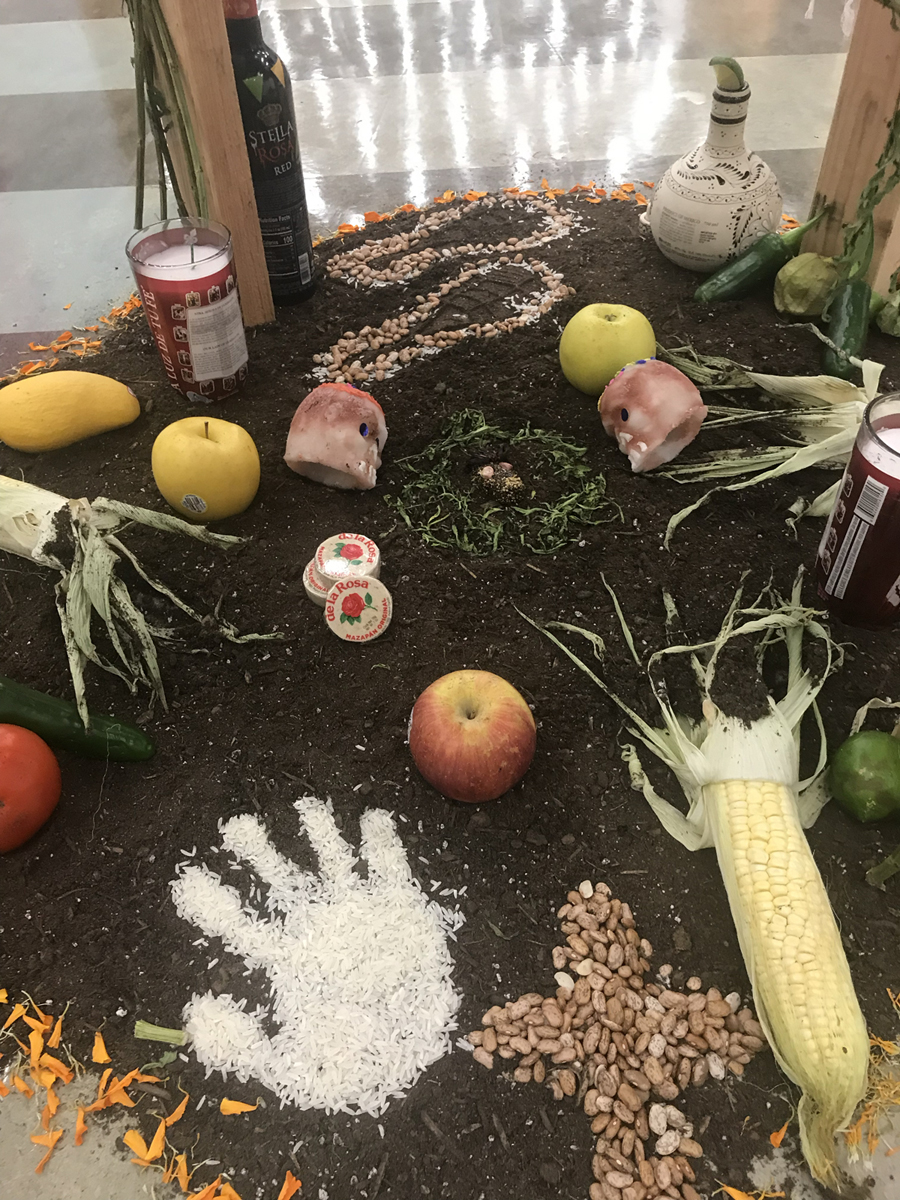
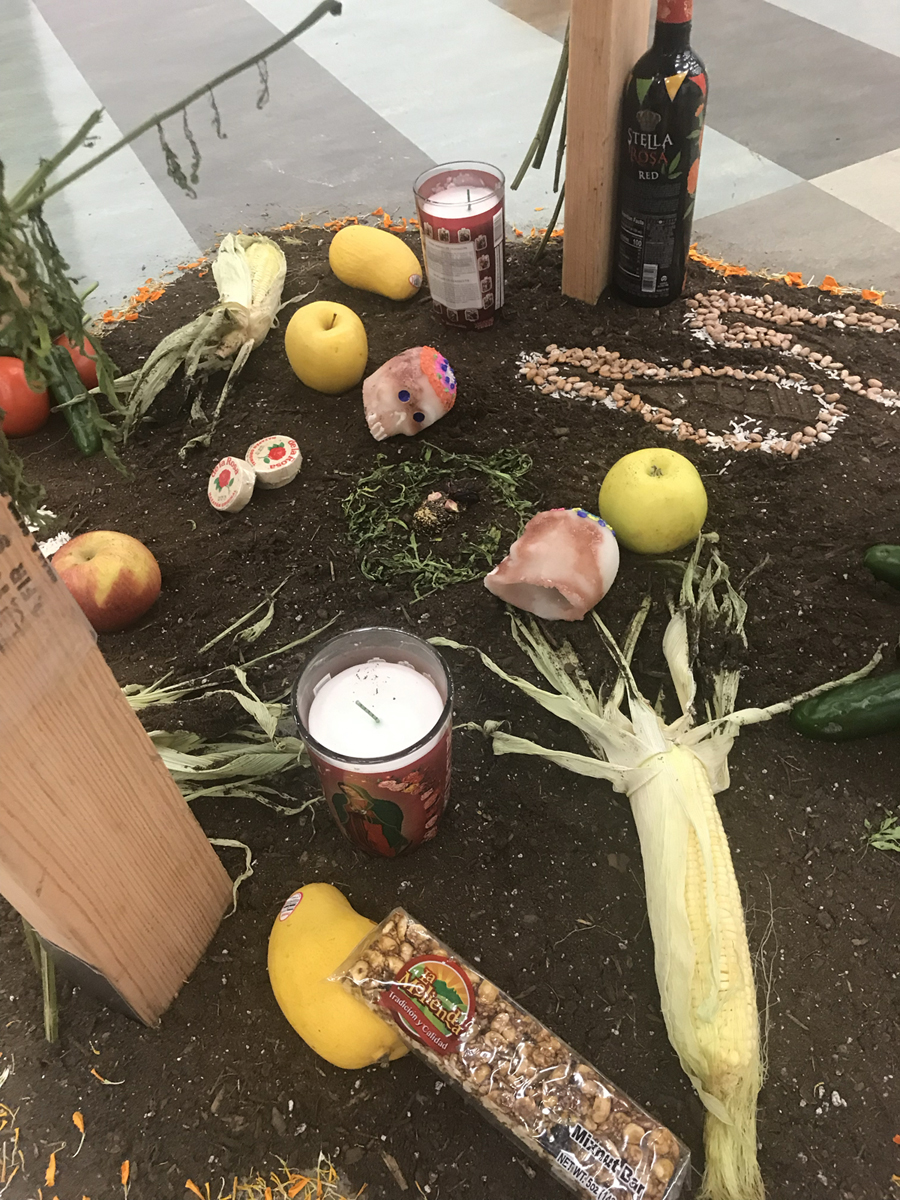
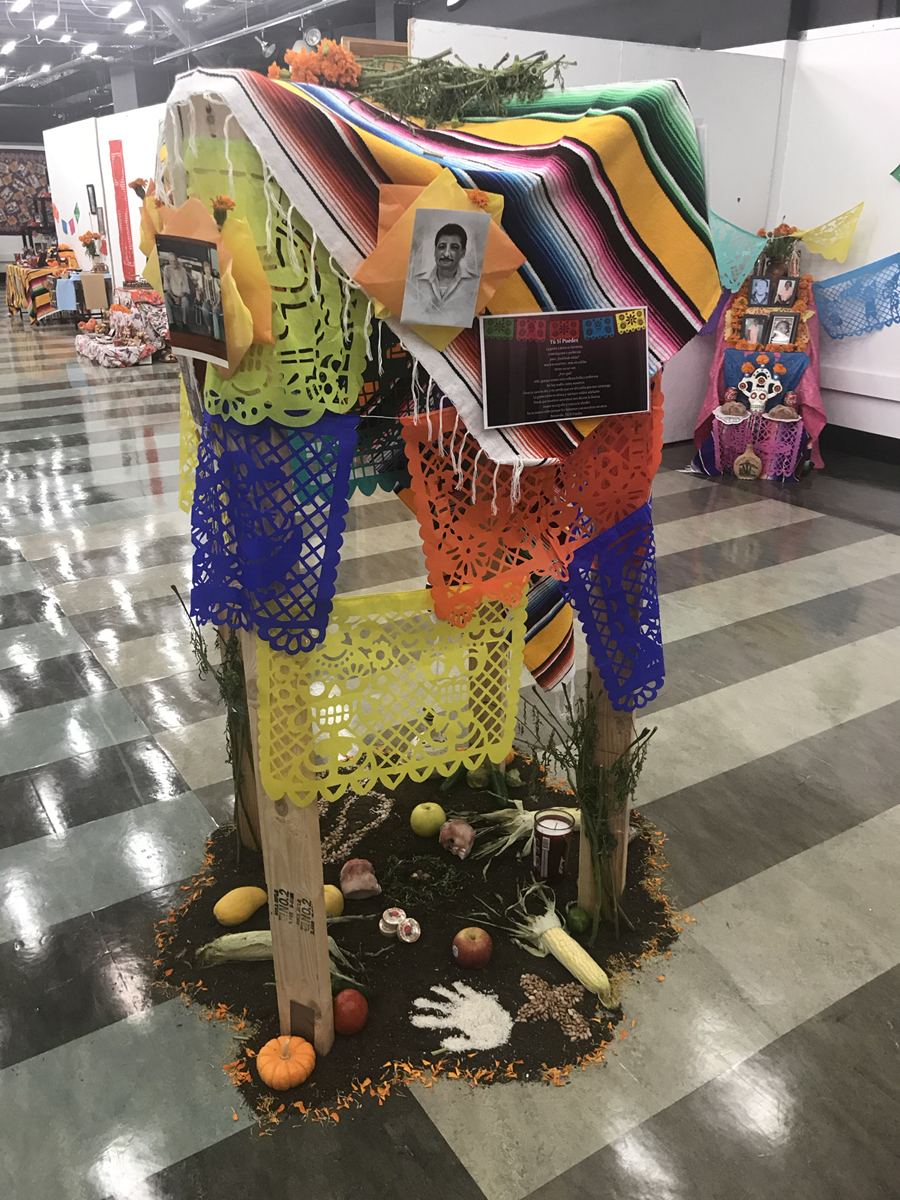
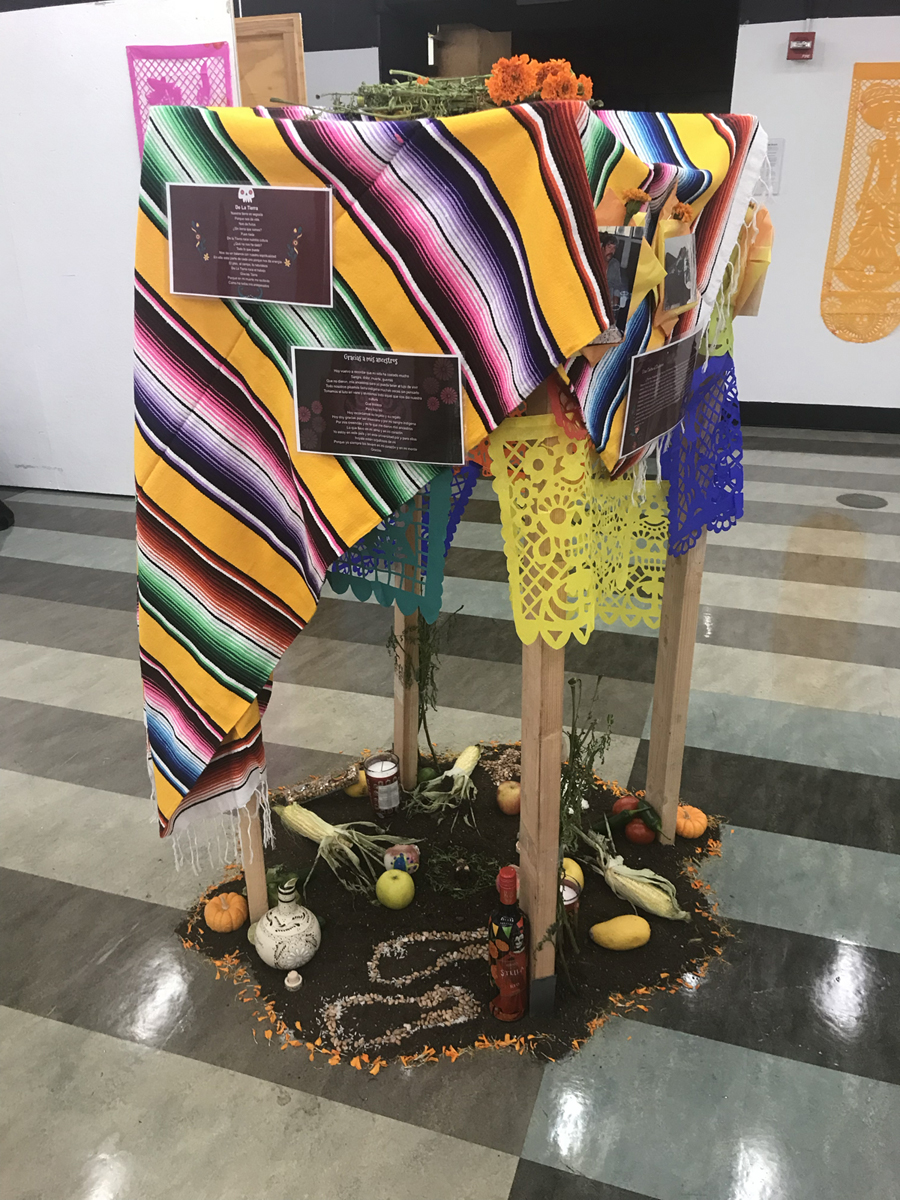

I wanted my altar to be more of an installation and statement piece over a traditional altar, so that it would allow itself for interpretation but at the same time, I myself could protest, share my thoughts and send loud messages to the community. I was inspired by many of the non-traditional altars that we got to see in class, especially the altars that were made to be walked around. I knew that I wanted my altar to be seen from different perspectives as to allow every item to be the center of attention at each angle. There were certain themes I wanted to highlight, Latine oppression, our ancestors and their legacy, el Azúcar and madre tierra/naturaleza. I
wanted to make a statement by creating something that resembled a cage, un “celda.” This served symbolic purposes, it protested the caging of people at detention centers and the metaphorical caging of the Latine community. We are always placed in sylos which we are not allowed to operate out of, we are only seen as valuable in certain ways and everything else we do is seen as a threat so we are kept in these cages by systemic inequalities. The wooden cage structure would also serve as the foundation for my altar allowing me to hang the pictures, poems and quilt from. The soil represented madre tierra, especially in the context that our community and ancestors had benefited from it. Something big this semester has been our connection to nature and how we can find balance there, as well as it feeding our spirituality and power. So making sure I represented that was essential. The way the soil was laid out did not have a specific meaning except for the soil that was coming out of the cage. It symbolized that madre tierra should not be taken advantage of and should be respected. Additionally it represented our ancestors escaping from the cage, as to inspire us to do the same. Leaving the wood uncovered and the branches sprouting from underneath it was also representing la naturaleza, as well as its ability to overcome adversity. Most of the ofrendas I wanted were food from the campo, something that my ancestors or relatives now pick, to honor their hard work and the legacy they have left behind. The apples especially represent how so many of my family work in apple farms in Washington. The tomatoes and chiles represent the salsas from our people, some traditional nut based candies, el elote y la calabazas. The bottles are for my ancestors cause they all loved to drink and the candles represent my religion and the fire. The pictures on the altar represented my paternal grandparents, maternal grandpa, maternal great grandfather and two of my uncles. These are people that I never met but that were very much loved by my family. The poems were actually inspired by the altars we saw in class that were all letters so I wanted to do the same. I wrote a poem that helped carry my altars narrative but also sent messages to the audience to help them reflect on their struggles, ancestors and their connection to nature. One of the big themes was sugar so I painted the traditional white sugar skulls with blood and laid them around the amarando skull to show that sugar is killing and enslaving us. The use of the rice and the beans represent very traditional grains and food used by the Latine community showing their power. I wanted to use them as more than just the grain and food but amplify their significance. One the bean was a cross again representing religion and peace, while the rice represented the huega left by our ancestors and the work they have done on la tierra. The footprints outlined by the rice and beans also represent the legacy of our ancestors by the were oriented leaving the altar. This represents the Latine community leaving the cages
that we are held in. Lastly the marigolds around the altar represented the presence of our ancestors and the corona on top was representation of the high value I have for nature and my ancestors.
Share
